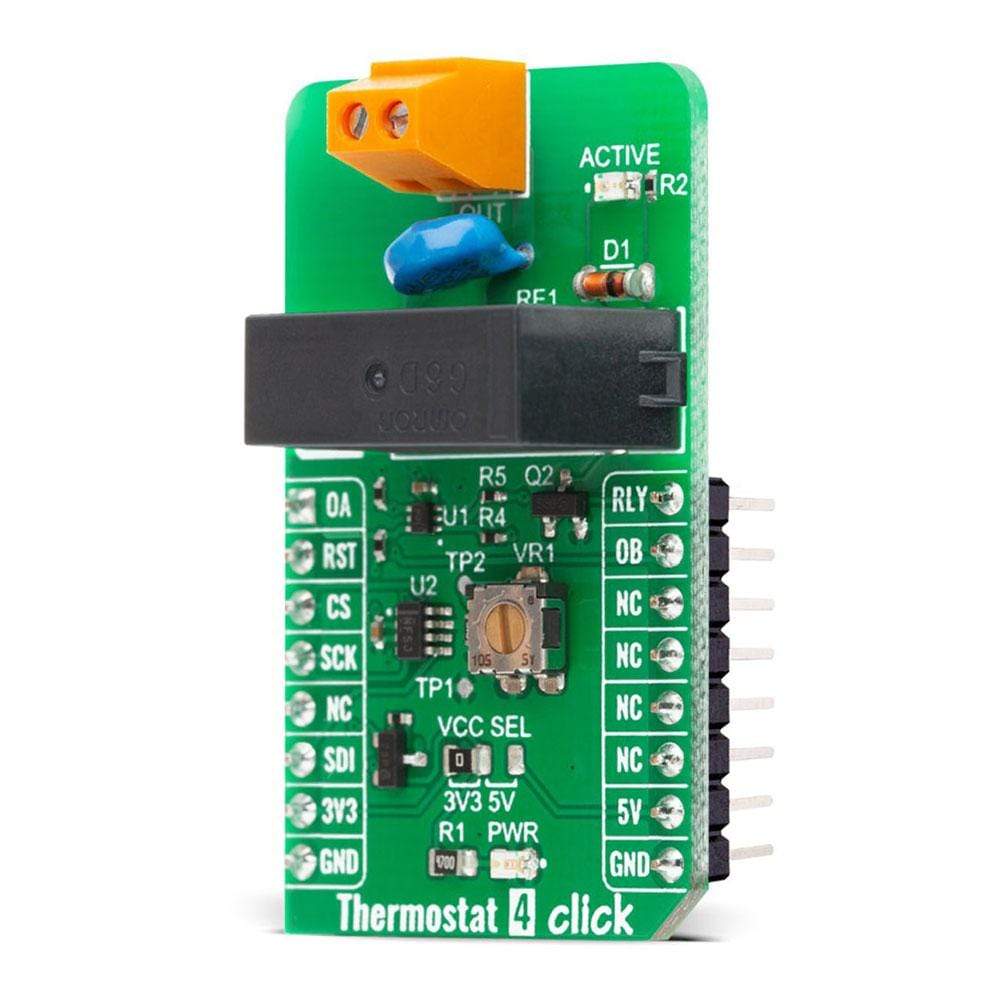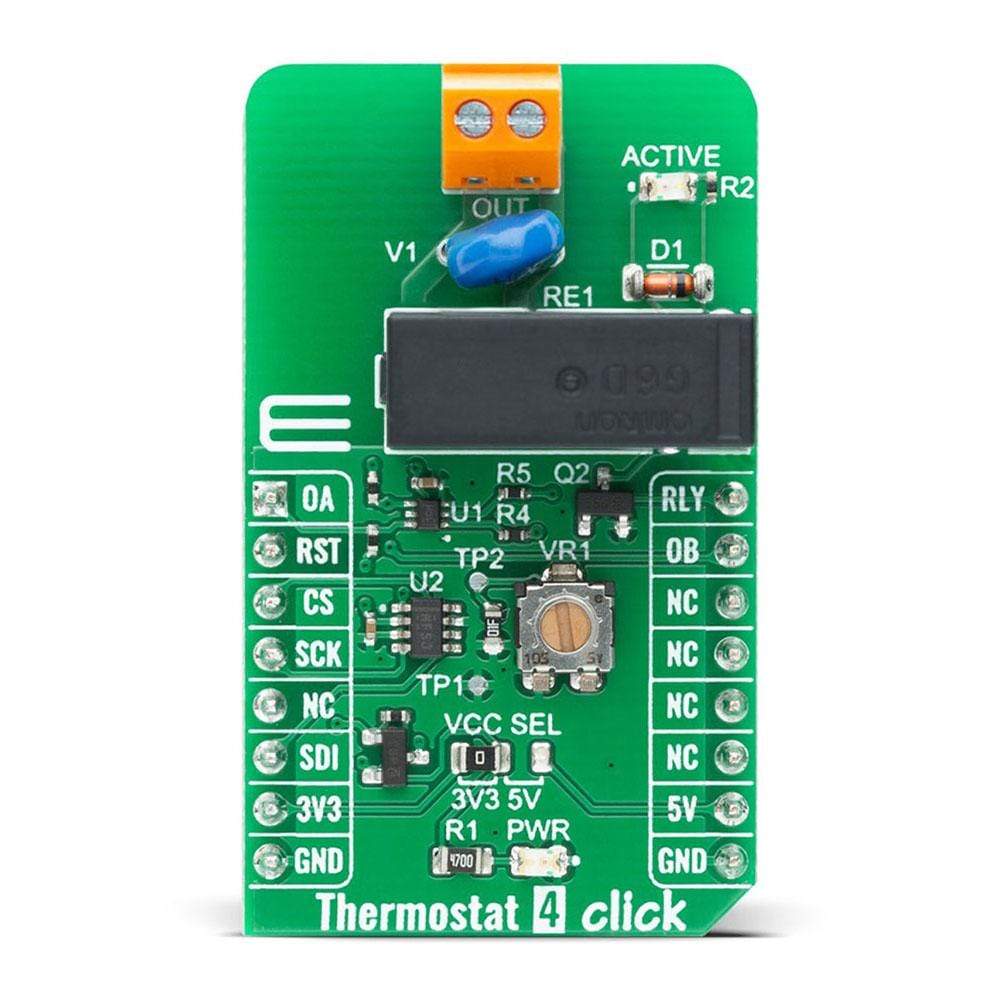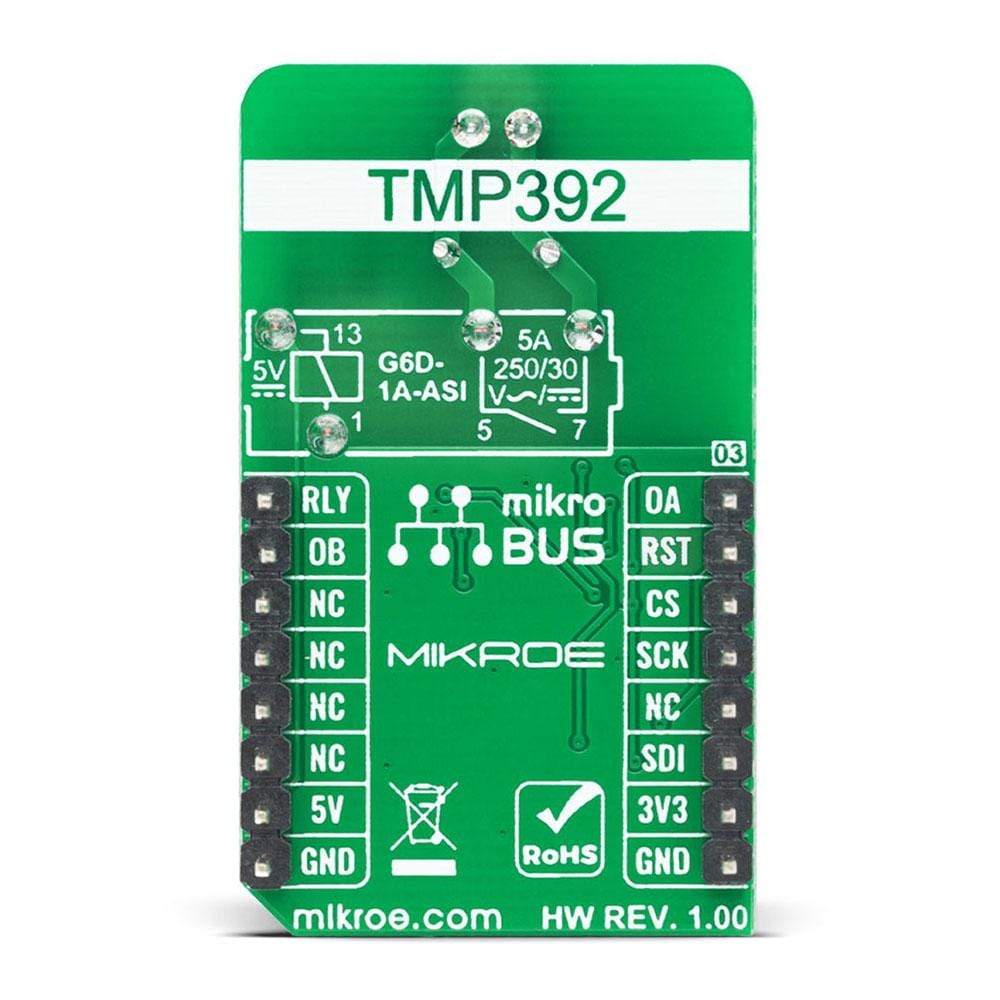


Overview
The Thermostat 4 Click Board™ is a complete solution that senses the temperature of a physical system and can perform actions so that the system's temperature is maintained near a desired setpoint. It's based on Texas Instruments TMP392, a resistor programmable temperature switch that enables protection and detection of system thermal events from 30°C to 130°C. It offers dual overtemperature (hot and warm) detection. The trip temperatures option is programmed by changing the trimmer resistance value for channel A and digital potentiometer resistance value over the SPI interface for channel B. The Thermostat 4 Click also contains a high-quality relay from Omron, that can be used to open or close an electric circuit. Despite its small size, it can be used with voltage up to 30VDC/220AC and current up to 5A.
The Thermostat 4 Click Board™ is supported by a mikroSDK compliant library, which includes functions that simplify software development. This Click Board™ comes as a fully tested product, ready to be used on a system equipped with the mikroBUS™ socket.
Downloads
Le Thermostat 4 Click Board ™ est une solution complète qui détecte la température d'un système physique et peut effectuer des actions pour que la température du système soit maintenue près d'un point de consigne souhaité. Il est basé sur le Texas Instruments TMP392, un interrupteur de température programmable par résistance qui permet la protection et la détection des événements thermiques du système de 30 °C à 130 °C. Il offre une double détection de surchauffe (chaude et tiède). L'option de températures de déclenchement est programmée en modifiant la valeur de résistance du trimmer pour le canal A et la valeur de résistance du potentiomètre numérique sur l'interface SPI pour le canal B. Le Thermostat 4 Click contient également un relais de haute qualité d'Omron, qui peut être utilisé pour ouvrir ou fermer un circuit électrique. Malgré sa petite taille, il peut être utilisé avec une tension jusqu'à 30 V CC/220 V CA et un courant jusqu'à 5 A.
Le Thermostat 4 Click Board™ est pris en charge par une bibliothèque compatible mikroSDK, qui comprend des fonctions qui simplifient le développement logiciel. Ce Click Board™ est un produit entièrement testé, prêt à être utilisé sur un système équipé du socket mikroBUS™.
| General Information | |
|---|---|
Part Number (SKU) |
MIKROE-4194
|
Manufacturer |
|
| Physical and Mechanical | |
Weight |
0.022 kg
|
| Other | |
Country of Origin |
|
HS Code Customs Tariff code
|
|
EAN |
8606027380051
|
Warranty |
|
Frequently Asked Questions
Have a Question?
Be the first to ask a question about this.



